By Marlies Nicolai, Research Assistant at Auchnerran
Now we’re in the middle of summer it has of course been some weeks since the end of the bird breeding season. I conducted breeding bird surveys over the period from May to July, whilst Masters student Emily, focused on locating breeding wader nesting sites and subsequently monitoring hatch success and the survival of chicks.
It is important to conduct these types of survey each year over summer and spring in order to build a picture of the species type present and their abundance, both adult and young, in order to assess breeding success and population dynamics. The data collected is also crucial for devising progressive steps towards conserving each species and managing and enhancing their environment.
Luckily for Auchnerran, the farm already provides almost ideal habitats for breeding waders due to low intensity farming practices and legal predator control.
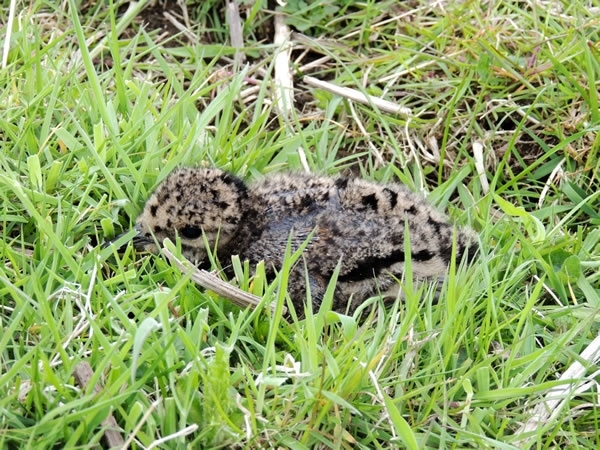 Oystercatcher chick hiding in amongst the grass.
Oystercatcher chick hiding in amongst the grass.
Following on from my previous blog on waders and our hope for a successful breeding year for 2016, it seems that has become a reality. Before the collected data has even been analysed, it is clear that a thriving new generation has been born.
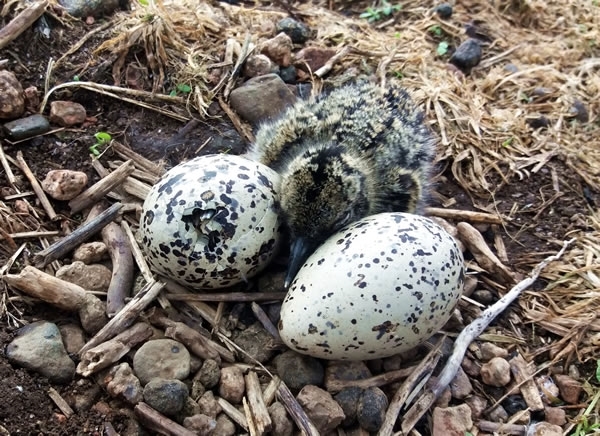 An Oystercatcher nest in a cut game crop field with a newly hatched chick with one in the process of hatching.
An Oystercatcher nest in a cut game crop field with a newly hatched chick with one in the process of hatching.
While surveying the farm, walking around the grazed pasture, cut game crop and re-seeded grass fields, it is evident that the area is alive with new life. Characteristics of a successful breeding wader site can be heard and seen throughout the farm.
Alarm calls of lapwing, oyster catchers and curlew echo over the fields as they try and distract and entice potential predators (often the research assistant) away from their eggs or hidden chicks. Scanning with binoculars over the areas containing preferred wader habitat, birds can often be found sitting on their nests keeping their eggs warm.
In general, there is an obvious sound of enhanced interaction between males, females and their young, as well as the loud and erratic threat displays and chases exhibited towards corvids trying to snack on a nest of eggs.
Unfortunately, it is inevitable that some nests are raided by corvids. Effective predator control such as setting corvid traps (Larsen traps) and shooting corvids, practices carried out by the local gamekeeper, help to reduce predation rates and therefore boost egg hatch and chick survival rates.
A further method for protecting nests is to identify each nest, especially in fields where tilling, drilling and rolling will be taking place. Each nest is stacked out so that the farmer can avoid them when manoeuvring his machinery.
In the event of a nest hatching just before land preparation is to take place (which did happen), a chick rescue operation is required. Emily and I carefully re-located a clutch of three chicks to a neighbouring field ensuring that their mother was following and could identify the chicks’ new location. I am delighted to say it was a success!
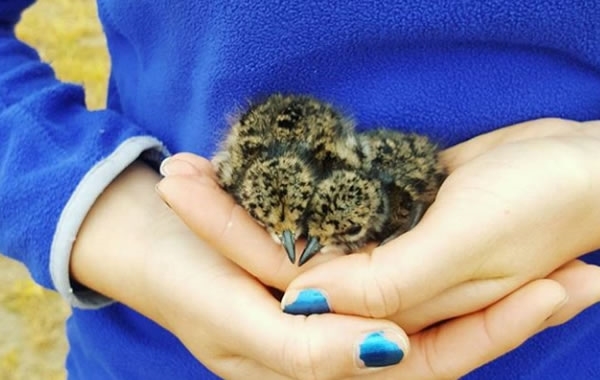 Relocating newly hatched lapwing chicks.
Relocating newly hatched lapwing chicks.
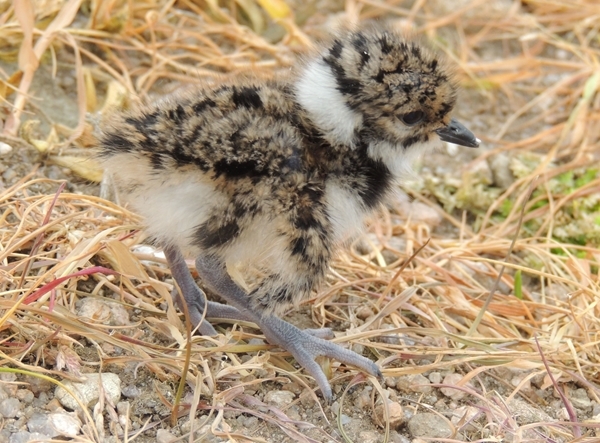 Relocated lapwing chick at only 8 hours old.
Relocated lapwing chick at only 8 hours old.
It is wonderful to see the large numbers of oystercatcher and lapwing breeding pairs and the number of young born. The resident curlew population has also done well and many pairs are proud parents of fledged young. It is not just the waders who have produced a new successful generation, but almost all bird species on the farm.
Here are a few pictures showing healthy young pheasant, grouse and swallow chicks.
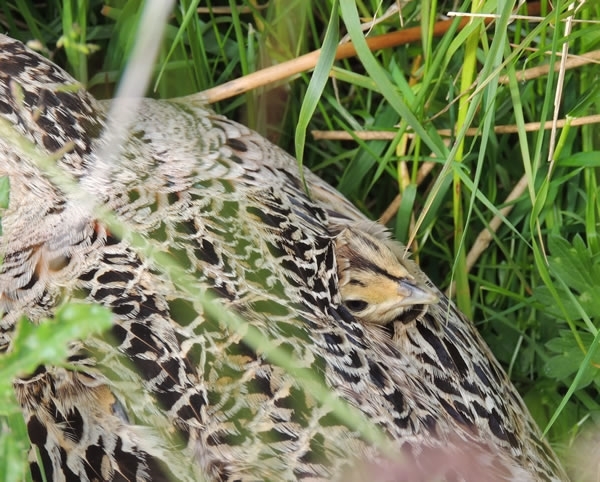 Pheasant chick hiding under mothers wing
Pheasant chick hiding under mothers wing
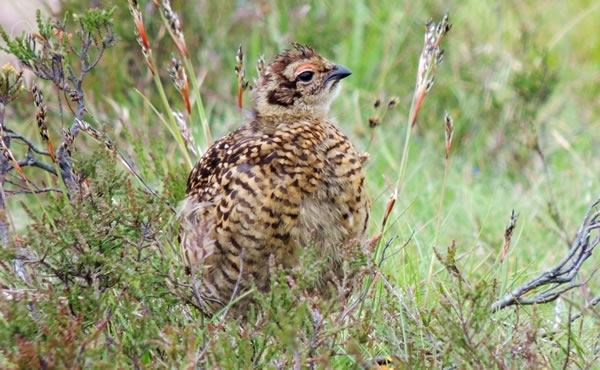 Grouse chick on the lookout in the heather
Grouse chick on the lookout in the heather
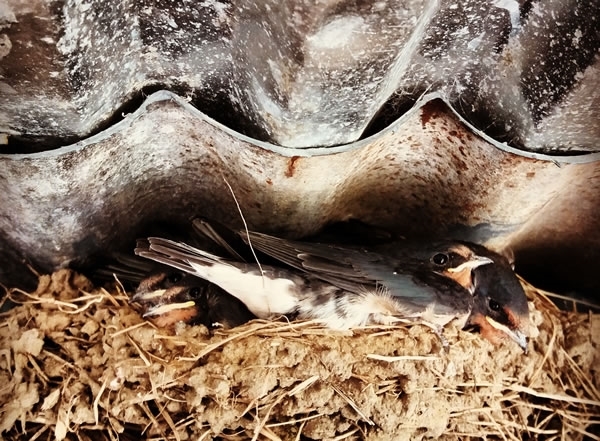 Resident swallow chicks in the work log shed.
Resident swallow chicks in the work log shed.